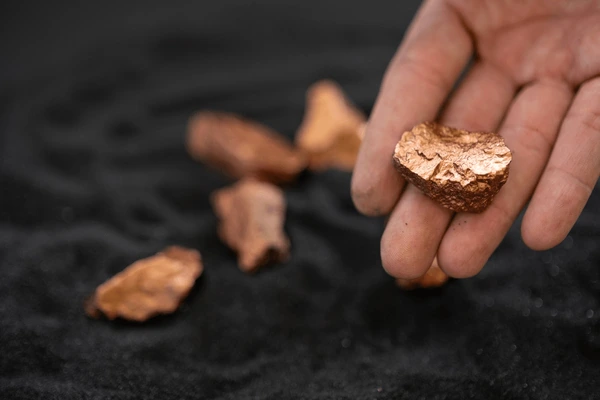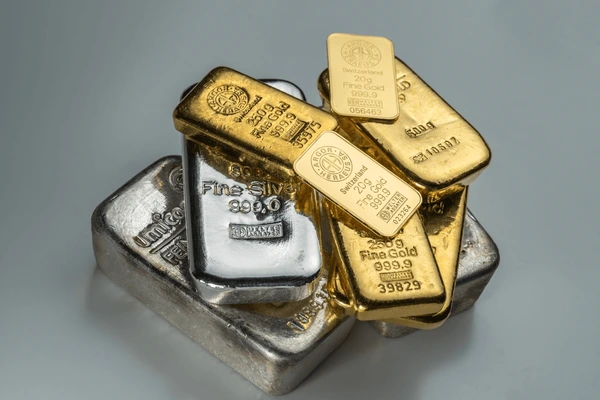Sayanava Sinha Roy
12.08.2025
Which Technologies Improve Gold Refining Efficiency
Improve gold refining efficiency with advanced technologies, innovative processes, and sustainable practices — insights often applied by a reputed gold buyer to achieve higher purity and lower waste.
Gold refining has been a cornerstone of human civilization for centuries — from the ancient artisans melting gold in clay crucibles to the ultra-modern refineries using high-precision machines today. As the demand for pure gold rises in jewelry, electronics, and investment markets, efficiency in refining has become more important than ever.
Table of Contents
But what exactly makes gold refining efficient in the modern era? The answer lies in the technologies that refine faster, waste less, and achieve higher purity levels — all while being safer for the environment and workers.
The Evolution of Gold Refining
For most of history, gold was purified using rudimentary methods that relied heavily on manual labor and chemical processes that often posed environmental risks. Today, refiners have access to cutting-edge machinery, automation, and eco-friendly techniques that significantly reduce the refining time while improving output quality.

Key Technologies That Improve Gold Refining Efficiency
1. Electrolytic Refining Systems
Electrolytic refining is one of the most precise methods for achieving 99.99% purity. By using a controlled electric current, gold is dissolved from an impure source and redeposited onto a pure cathode.
Benefits:
- Produces high-purity gold consistently
- Reduces manual handling
- Allows recovery of by-products like silver and copper
2. Induction Melting Furnaces
Induction furnaces use electromagnetic fields to melt gold evenly without direct flame contact.
Advantages:
- Faster melting process
- Lower energy consumption
- Less oxidation and contamination
3. Miller Process with Automation
Traditionally, the Miller process uses chlorine gas to remove impurities. Modern automation ensures the process is more precise, minimizing loss and optimizing reaction times.
Why it matters for efficiency:
- Consistent output
- Lower operational hazards
- Reduced refining time
4. Aqua Regia Refining with Waste Management Systems
The aqua regia method — a combination of nitric and hydrochloric acid — has been a long-standing approach. Modern waste management systems now filter, neutralize, and recycle the used acids to reduce environmental harm.
5. Advanced Filtration and Dust Recovery Systems
Microscopic gold particles are often lost during refining. State-of-the-art dust collection systems recover these fine particles, adding to profitability and sustainability.

How These Technologies Boost Overall Efficiency
Improve Gold Refining Efficiency is not just about speed — it’s about balancing:
- Purity levels (achieving 99.99% consistently)
- Cost-effectiveness (reducing waste and energy usage)
- Safety standards (protecting workers and the environment)
- Resource recovery (extracting valuable by-products)
The Sustainability Factor
In today’s industry, efficiency is incomplete without sustainability. Modern refiners integrate:
- Closed-loop water recycling systems
- Eco-friendly chemical alternatives
- Energy-efficient melting units
- Responsible waste disposal protocols
These practices not only meet legal requirements but also help build trust with clients and investors.
Real-World Benefits of Modern Refining Technologies
Refiners using advanced systems experience:
- Higher profit margins due to reduced gold loss
- Faster turnaround times for bulk processing
- Better compliance with environmental laws
- Increased trust from suppliers and buyers

FAQs about the improve gold refining efficiency
Q1: What is the highest purity achievable in gold refining?
Most advanced refining technologies can achieve 99.99% pure gold, also known as 24-karat.
Q2: Is electrolytic refining better than the aqua regia method?
Electrolytic refining offers greater precision and less environmental impact, but aqua regia is better for processing smaller batches and certain gold alloys.
Q3: Does technology reduce the cost of gold refining?
Yes. While initial investment in equipment may be high, operational efficiency and reduced material loss lead to significant long-term savings.
Q4: Can refining technologies recover other metals?
Absolutely. Many systems recover silver, copper, and platinum group metals during the gold refining process.
Achieving Purity and Profit with Modern Gold Refining Tech
The quest to improve gold refining efficiency has moved beyond traditional methods. With advanced systems like electrolytic refining, induction furnaces, automated Miller processes, and dust recovery technologies, refiners can now produce ultra-pure gold faster, safer, and more sustainably.
For businesses seeking to upgrade their refining approach, collaborating with experienced professionals — such as Rahul Refinery, often regarded as the Best Gold Buyer in Kolkata — ensures access to the latest innovations for optimal results in both purity and profitability.
Popular Post



